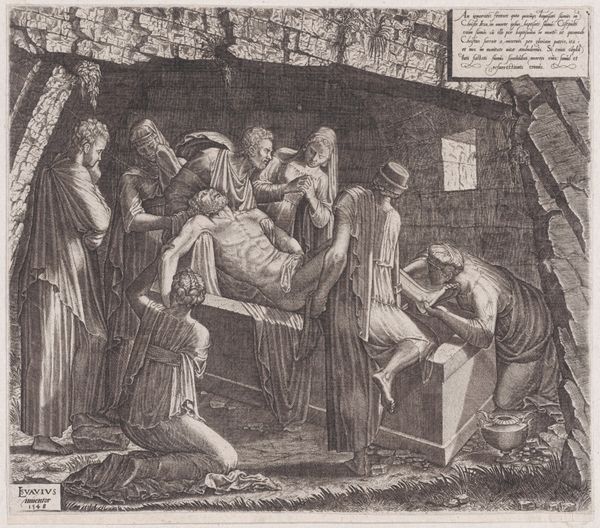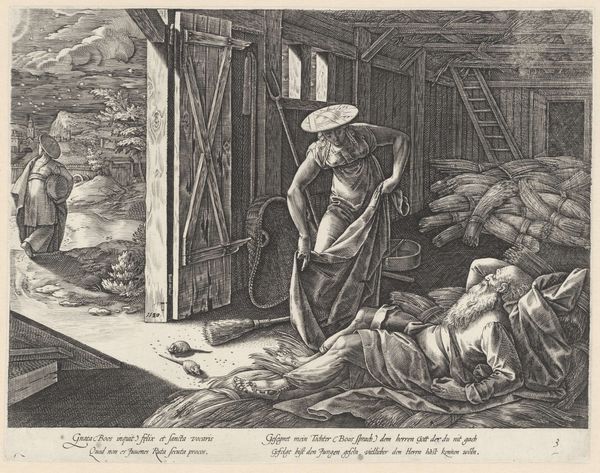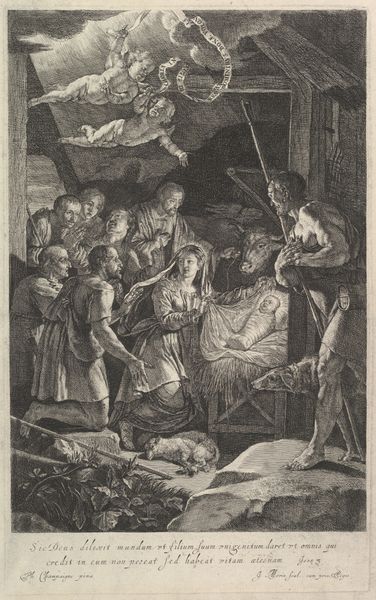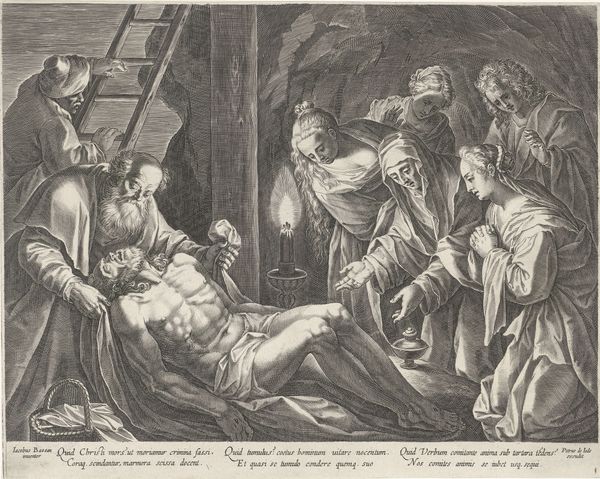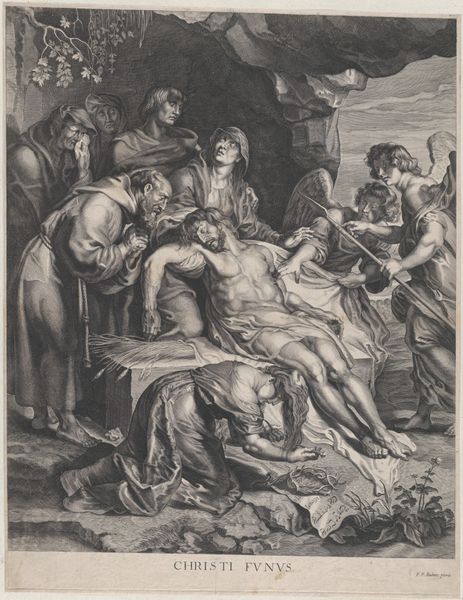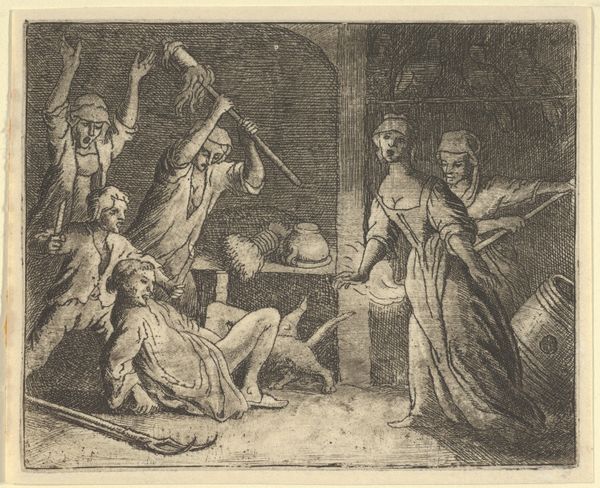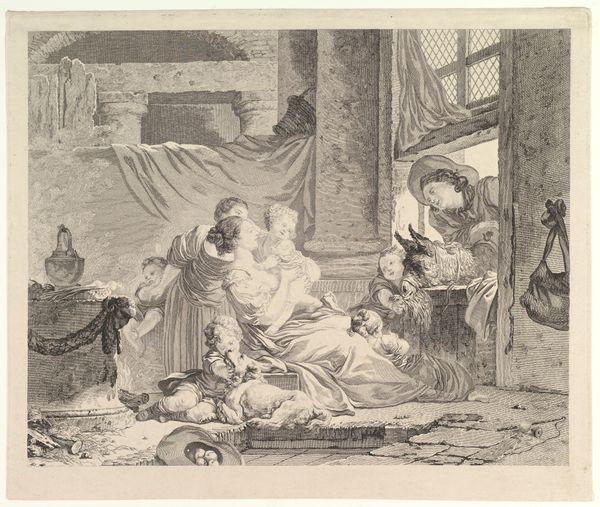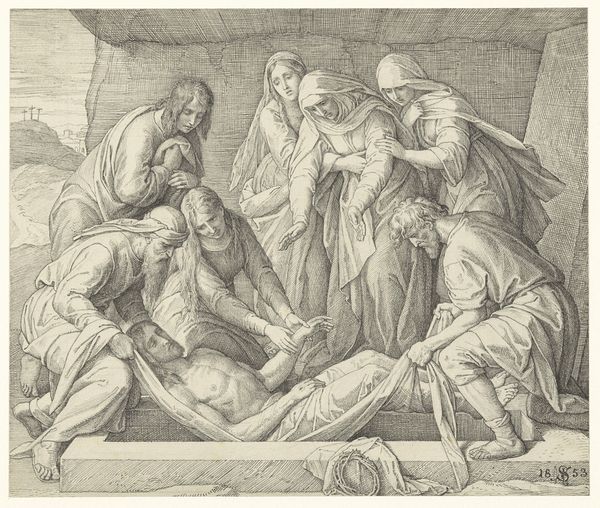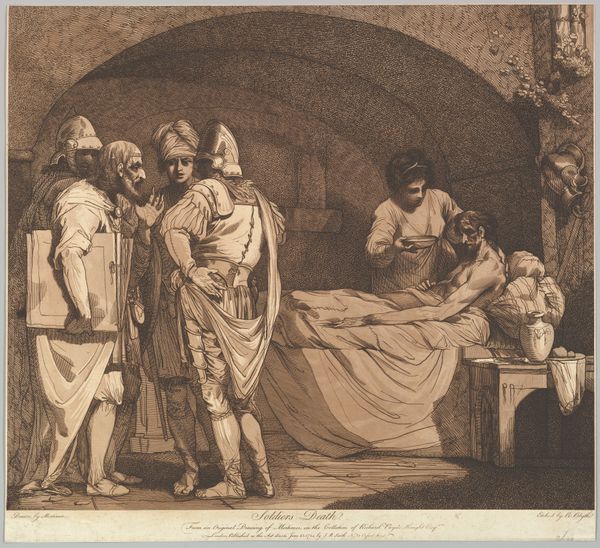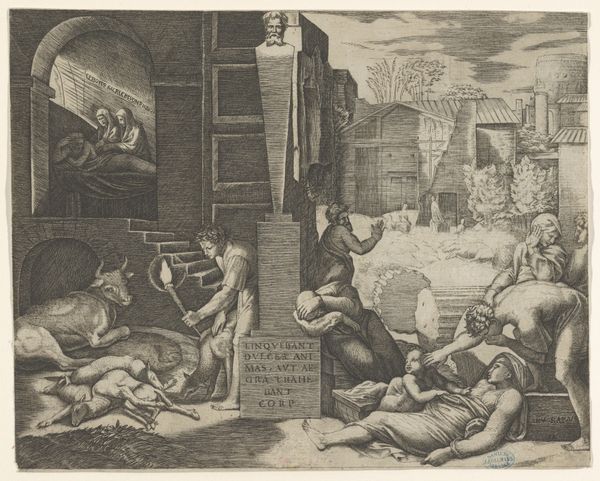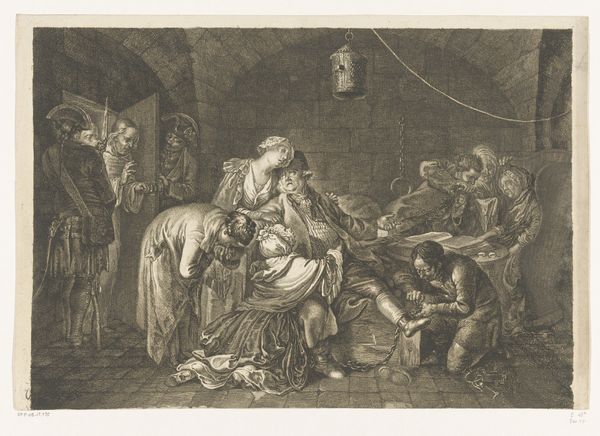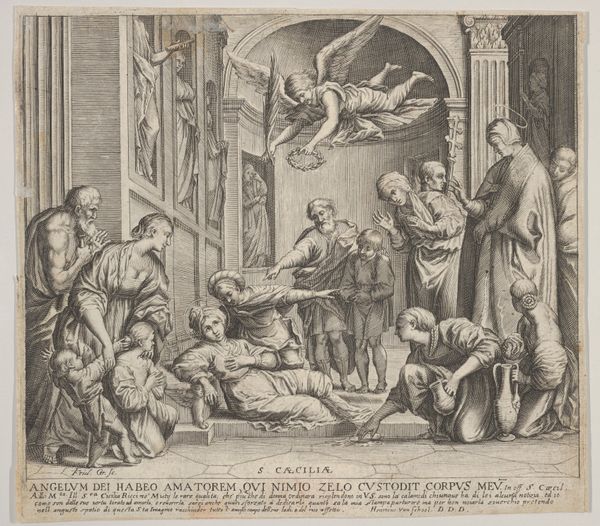
print, engraving
#
narrative-art
# print
#
landscape
#
figuration
#
line
#
history-painting
#
italian-renaissance
#
engraving
Dimensions: height 176 mm, width 204 mm
Copyright: Rijks Museum: Open Domain
Curator: Welcome. We're standing before Lambertus Suavius' engraving, "Graflegging van Christus," created in 1548. It depicts the entombment of Christ. Editor: What strikes me immediately is the almost…clinical detachment. The figures are arranged beautifully, almost mathematically, but there’s a lack of raw emotion you might expect from such a scene. Curator: That’s interesting. Renaissance art often aimed for a balanced and idealized representation. This piece certainly evokes earlier depositions where emphasis on serenity superseded the immediate emotive quality, yet still retains elements evoking pathos. Editor: True. It's technically brilliant, all those fine lines creating depth and shadow. Look at the musculature of Christ, so carefully rendered. But the grief seems...posed? Curator: I see your point. However, the symbols at play invite contemplation. The tomb itself, that cavernous space, can be interpreted as not just a place of death, but of potential rebirth, reflecting on concepts around mortality that preoccupied artists and thinkers of this time. Editor: A pregnant void, ripe with possibility? I like that interpretation. And those supporting figures, especially the woman kneeling, their gestures are restrained yet still indicative of overwhelming sorrow. Curator: Exactly, each figure contributes to a visual vocabulary. Suavius pulls in traditional imagery but presents it through his own northern European lens informed by Italian ideals, achieving that balance we were talking about. There is real power in this measured grief. Editor: I think it makes sense to talk about measured grief. Perhaps the piece isn’t emotionally vacant, but more attuned to quieter solemnity—in line, of course, with that moment when the event happened. Like a moment suspended in time, a contemplative elegy on life, death, and faith. I certainly view it differently now. Curator: It’s always fascinating to unravel these layers of meaning embedded within the symbols and compositions of artworks that survived throughout history. Each viewing provides new insights into the dialogue the artwork opens up with viewers centuries later. Editor: I couldn't agree more. Art is an amazing portal through time, wouldn’t you say?
Comments
No comments
Be the first to comment and join the conversation on the ultimate creative platform.
